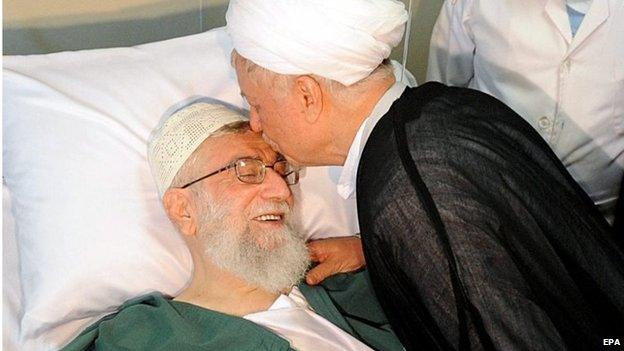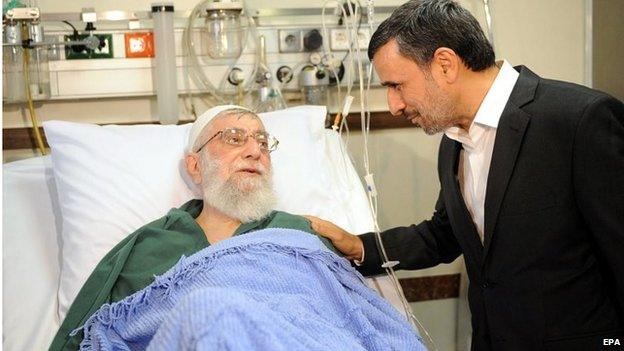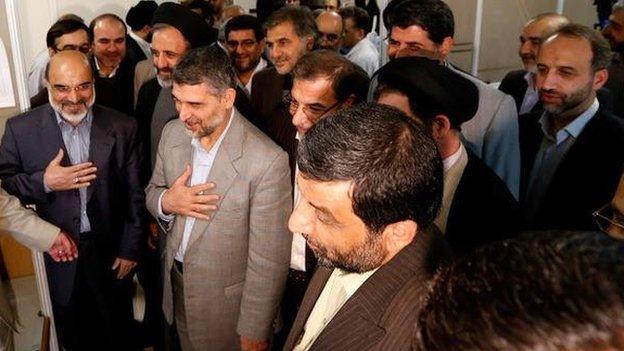Iran leader's surgery: What the media coverage reveals
- Published

Official pictures gave an insight into the pecking order at the highest level
When Iran's Supreme Leader went into hospital for prostate surgery this week, the authorities were remarkably open about it, giving a revealing insight into the political elite along the way.
The transparency exercised by Ayatollah Ali Khamenei and his office, stressing that the surgery was routine, not only helped avert unnecessary speculation but reflected the state's increasing self-confidence in its stability.
On a number of previous occasions, lengthy absences by the ayatollah were sufficient to spread rumours of his death.
The name of the "public" hospital where the Supreme Leader is being treated was withheld, perhaps to avoid dramatic scenes of frantic supporters flocking there.
Yet the location was no secret to the dozens of Iranian officials from all branches of government who paid visits to Ayatollah Khamenei's bedside.
Awkward moment
Although there is no written protocol regulating an audience with the Supreme Leader, each encounter communicated the standing of each individual with the country's most powerful man.

Relations between the ayatollah and Mahmoud Ahmadinejad cooled towards the end of his presidency
Some were allowed to kiss the ayatollah on the forehead, a privilege reserved for the highest authorities, including President Hassan Rouhani (the first to visit), and grand clerics.
Others, such as ministers and their deputies, could only stand at a distance and not approach.
A study of these encounters, when it came to ex-presidents, was instructive of Iran's politics.
This is especially true of controversial former President Mahmoud Ahmadinejad, whose disputed victory sparked deadly protests in 2009 which intensified after Ayatollah Khamenei publicly backed the results.
Mr Ahmadinejad tried to give the ayatollah a kiss, but the Supreme Leader slightly, though noticeably, turned his face and did not smile, television pictures showed.
The moment was indicative of how relations between the two had cooled in the final years of the former president's tenure.
After the visit, the former president seemed displeased but struck an ever-loyal posture by posting a photo of his visit, external on his Instagram account, lamenting the estrangement in subtle, poetic language.
Conspicuous absence
On the other hand, the former president and influential politician Ali Akbar Rafsanjani was warmly received, even though he has been marginalised from power over the past few years for his sympathies with the opposition.

Not everyone was allowed to approach, even less kiss the leader
Iran watchers were left to speculate as to whether there will now be a meaningful political future for Mr Rafsanjani.
The Supreme Leader's grace did not extend as far as former president and pro-reform politician Mohammad Khatami, who was not to be seen among the long queue of official visitors.
Despite the posturing and a carefully managed state PR, Iranian social media, where opinions are exchanged freely, public sentiment was not choreographed. Access to social media sites in Iran is blocked though users get round this with "anti-filters".
Many chose to mock the Supreme Leader, his condition, and the visitors to his bedside, while others wished the same care could have been afforded to those opposition activists who have been injured or jailed.